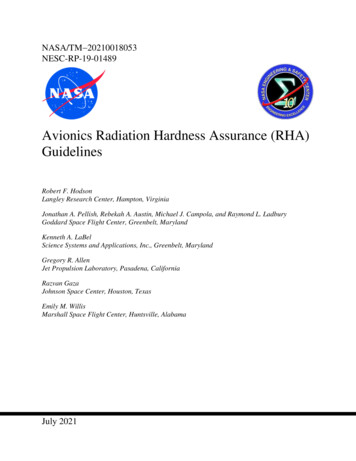
Transcription
NASA/TM 20210018053NESC-RP-19-01489Avionics Radiation Hardness Assurance (RHA)GuidelinesRobert F. HodsonLangley Research Center, Hampton, VirginiaJonathan A. Pellish, Rebekah A. Austin, Michael J. Campola, and Raymond L. LadburyGoddard Space Flight Center, Greenbelt, MarylandKenneth A. LaBelScience Systems and Applications, Inc., Greenbelt, MarylandGregory R. AllenJet Propulsion Laboratory, Pasadena, CaliforniaRazvan GazaJohnson Space Center, Houston, TexasEmily M. WillisMarshall Space Flight Center, Huntsville, AlabamaJuly 2021
NASA STI Program Report SeriesSince its founding, NASA has been dedicated to theadvancement of aeronautics and space science. TheNASA scientific and technical information (STI)program plays a key part in helping NASA maintainthis important role. CONFERENCE PUBLICATION.Collected papers from scientific and technicalconferences, symposia, seminars, or othermeetings sponsored orco-sponsored by NASA.The NASA STI program operates under the auspicesof the Agency Chief Information Officer. It collects,organizes, provides for archiving, and disseminatesNASA’s STI. The NASA STI program provides accessto the NTRS Registered and its public interface, theNASA Technical Reports Server, thus providing oneof the largest collections of aeronautical and spacescience STI in the world. Results are published in bothnon-NASA channels and by NASA in the NASA STIReport Series, which includes the following reporttypes: SPECIAL PUBLICATION. Scientific,technical, or historical information from NASAprograms, projects, and missions, oftenconcerned with subjects having substantialpublic interest. TECHNICAL TRANSLATION.English-language translations of foreignscientific and technical material pertinent toNASA’s mission. TECHNICAL PUBLICATION. Reports ofcompleted research or a major significant phase ofresearch that present the results of NASAPrograms and include extensive data or theoreticalanalysis. Includes compilations of significantscientific and technical data and informationdeemed to be of continuing reference value.NASA counterpart of peer-reviewed formalprofessional papers but has less stringentlimitations on manuscript length and extent ofgraphic presentations.TECHNICAL MEMORANDUM.Scientific and technical findings that arepreliminary or of specialized interest,e.g., quick release reports, workingpapers, and bibliographies that contain minimalannotation. Does not contain extensive analysis.CONTRACTOR REPORT. Scientific andtechnical findings by NASA-sponsoredcontractors and grantees.Specialized services also include organizingand publishing research results, distributingspecialized research announcements and feeds,providing information desk and personal searchsupport, and enabling data exchange services.For more information about the NASA STI program,see the following: Access the NASA STI program home page athttp://www.sti.nasa.gov Help desk contact orm/and select the “General” help request type.
NASA/TM 20210018053NESC-RP-19-01489Avionics Radiation Hardness Assurance (RHA)GuidelinesRobert F. HodsonLangley Research Center, Hampton, VirginiaJonathan A. Pellish, Rebekah A. Austin, Michael J. Campola, and Raymond L. LadburyGoddard Space Flight Center, Greenbelt, MarylandKenneth A. LaBelScience Systems and Applications, Inc., Greenbelt, MarylandGregory R. AllenJet Propulsion Laboratory, Pasadena, CaliforniaRazvan GazaJohnson Space Center, Houston, TexasEmily M. WillisMarshall Space Flight Center, Huntsville, AlabamaNational Aeronautics andSpace AdministrationLangley Research CenterHampton, Virginia 23681-2199July 2021
AcknowledgmentsThe NESC team wishes to thank peer reviewers Mr. Charles Bailey, JohnsonSpace Center (JSC); Dr. Stephen Buchner, Naval Research Laboratory; Dr. JamesHoward, Missile Defense Agency/a.i. solutions, Inc.; Dr. Jean-Marie Lauenstein,Goddard Space Flight Center (GSFC); Mr. Steven McClure, Jet PropulsionLaboratory/California Institute of Technology; Mr. Steven Gentz, Marshall SpaceFlight Center (MSFC); Dr. Azita Valinia, GSFC; and Mr. Timothy Brady, JSC;for their support.The use of trademarks or names of manufacturers in the report is for accurate reporting and does notconstitute an official endorsement, either expressed or implied, of such products or manufacturers by theNational Aeronautics and Space Administration.Available from:NASA STI Program / Mail Stop 148NASA Langley Research CenterHampton, VA 23681-2199Fax: 757-864-6500
Table of Contents1.0Notification and Authorization . 12.0Executive Summary . 23.0Guideline Introduction . 33.1 Motivation . 33.2 Document Structure and Navigation . 43.3 Radiation Hardness Assurance (RHA) Philosophy . 53.4 Common Space Environment Reference . 73.5 RHA Best Practices for Project Milestone Entrance and Exit Criteria . 83.6 Considerations for Commercial-off-the-shelf (COTS) Technologies. 103.7 References . 114.0Shielding and Radiation Transport . 134.1 Section Summary . 134.2 Radiation Effects. 144.2.1 Cumulative Effects . 144.2.2 Transient or Rate Effects . 154.3 Radiation Analysis Tools . 154.3.1 Non-Monte Carlo (MC) . 154.3.2 Forward Monte Carlo (FMC) . 164.3.3 Reverse Monte Carlo (RMC) . 164.4 Summary Table . 174.5 References . 185.0Total Ionizing Dose (TID) . 215.1 Section Summary . 215.2 Physical Mechanisms . 225.3 Susceptible Devices . 235.4 Overview of Piece-Part Hardness Assurance. 255.5 Challenges Introduced by Uncertainties in the Environment and Part-Level RadiationPerformance . 275.6 Future Advancements . 295.7 References . 295.7.1 Useful Standards and Additional References for TID . 316.0Total Non-ionizing Dose (TNID)/Displacement Damage Dose (DDD) . 336.1 Section Summary . 336.2 Physical Mechanisms . 346.3 Susceptible Devices . 356.4 TNID Calculations . 366.4.1 Environments of Interest . 366.4.2 Effective Fluence Calculations . 366.4.3 Limitations of Non-ionizing Energy Loss (NIEL) Scaling and Effective Fluence . 366.5 References . 386.5.1 Useful Standards and Additional References for Displacement Damage . 387.0Single Event Effects (SEEs). 407.1 Section Summary . 407.2 SEE Fundamentals . 417.3 SEE Requirements and the IRCP . 427.4 SEE Types and Mechanisms . 447.5 SEE Mitigation Techniques . 467.6 SEE Testing . 477.6.1 Piece-Part Heavy Ion SEE Testing . 47iii
7.6.2 High-Energy Proton and Neutron SEE Testing . 487.6.3 CCA SEE Testing . 497.7 SEE Test Facilities . 507.8 SEE Rate Calculations and Circuit Impact Assessment . 517.9 References . 528.0Single Event Effects Criticality Analysis (SEECA) . 578.1 Section Summary . 578.2 SEE Hazards . 588.3 SEEs at the System Level . 598.3.1 System-Level Inference . 598.3.2 Criticality Classification . 608.3.3 Mission, Environment, Application, and Lifetime (MEAL) . 628.4 SEECA and Requirements Flow . 638.5 Guidance for SEECA Implementation . 648.6 References . 669.0Radiation Testing and Analysis . 689.1 Section Summary . 689.2 Drivers for Test and Analysis Methodologies . 699.3 Using Archival Data in a Radiation Analysis . 709.4 Matching Approaches to the Threat . 729.4.1 TID Test and Analysis . 729.4.2 TNID Test and Analysis . 759.4.3 SEE Testing and Analysis. 769.5 Prioritizing Radiation Testing Efforts . 819.6 References . 819.6.1 Useful Standards and Additional References for Radiation Testing and Analysis . 8210.0Operational Monitoring for Radiation Effects . 8310.1 Section Summary . 8310.2 Best Practices . 8410.3 References . 8611.0Consolidated Reference List . 88Appendix A. Ray Trace/Shielding Analysis Checklist for NOVICE RMC Simulations . 101Appendix B. Generating Radiation Requirements . 103Appendix C. Goal Structuring Notation (GSN) and Model-Based Mission Assurance (MBMA) . 108Appendix D. Proton Testing at Medical Therapy Facilities . 115Appendix E. Impact of Sample Size on Radiation Testing and Analysis . 127List of FiguresFigure 2.0-1.Figure 3.2-1.Figure 3.2-2.Figure 3.3-1.Figure 3.3-2.Figure 3.5-1.Figure 5.2-1.Figure 5.4-1.Figure 5.5-1.Guideline Document Organization Graph . 3Guideline Document Organization Graph . 4Example Navigation Graphic, Section 6.0 . 4Graphical Mapping between RHA Processes, Themes, and Levels . 5Lifecycle Processes for Flight Program/Project RHA . 7Recommended RHA Process Gates as a Function of General Program/Project Phases . 9IB versus Total Dose for LM111s [adapted from Shaneyfelt et al., 2000] . 23Piece-Part RHA Methodology [adapted from Poivey, 2017] . 26After Figure 3.3.1.1-4 from Revision G of the DSNE, representing daily TrappedRadiation Belt TID inside Shielding for ISS Orbit . 28iv
Figure 6.2-1.Figure 6.4-1.Figure 8.3-1.Figure 8.3-2.Figure 8.4-1.Figure 8.5-1.Figure 9.4-1.Figure 9.4-2.Figure 9.4-3.Figure 9.4-4.Potential Isolated Defects in Silicon induced by Incident Particle (left) [Srour andPalko, 2013] . 34Damage for Dark Current as a Function of NIEL in Silicon Devices for Variety ofParticle Energies and Species [Srour and Palko, 2013; Summers et al., 1993] . 37Levels of Spacecraft Design [Gates and LaBel, 1995] . 59Example Single-Event Severity Flow Diagram [SEECA, 1996] . 61RHA Flow with SEECA Considerations . 64Boxed Representation of SEECA . 65Sample Size and Failure Distribution Variations . 74Example of One-Sided Tolerance Limits Applied to TID Data . 74Process of Calculating SEE Rates. 78Destructive SEE Data for Power MOSFET Safe Operating Area Determination . 80List of TablesTable 3.4-1.Table 3.5-1.Table 4.4-1.Table 5.3-1.Table 6.3-1.Table 7.4-1.Table 7.4-2.Table 7.5-1.Table 8.3-1.Table 8.5-1.Table 9.2-1.Applicability Matrix for DRM by Region of Space . 8Examples of Recommended RHA Activities for Program/Project Milestones . 9Radiation Transport Tools Summary . 17Potentially Susceptible Technologies and Impacted Parameters . 24Potentially Susceptible Technologies and Impacted Parameters . 35SEE Type Susceptibility of Various Technologies and Part Types [adapted fromLadbury, 2017]. 45SET Signature Guidelines for Selected Device Types (these apply to rad-hard partsonly and are to be interpreted as enveloping 90% of applications) . 46Sample Error Detection Methods and Correction Capabilities [adapted fromLaBel, 1996] . 47Sample of Consequence Criteria . 63Steps for Implementing SEECA . 66Driving Factors for Radiation Testing and Analysis Methodologies. 70v
NomenclatureCE0FeffKdarkPsRfRspec Level of ConfidenceMonoenergetic ParticleEffective FluenceDamage FactorProbability of SurvivalRadiation Failure Level of the PartRadiation Specification LevelParticle nalog-digital ConvertersSilverAdvanced Photovoltaic ExperimentActive Pixel SensorAnalog Single-event TransientApplication-specific Integrated CircuitBose–Chaudhuri–HocquenghemBipolar CMOSBipolar Junction TransistorBrookhaven National LaboratoryBook of KnowledgeBromineComputer-aided DesignCircuit Card AssemblyCharge-coupled Devicecentimeter–gram–secondCMOS Image SensorConfidence LevelComplementary Metal Oxide SemiconductorConcept of OperationsCommercial off the ShelfCombined Release and Radiation Effects SatelliteCosmic Ray Upset ExperimentCharge Transfer EfficiencyDirect CurrentDisplacement Damage DoseDynamic Random-access MemoryDesign Reference MissionsDestructive Single-event EffectsDigital Single-event TransientDesign Specification for Natural EnvironmentsDevice Under TestError Detection and CorrectionElectrical, Electronic, Electromechanical, And Electro-opticalEnhanced Low Dose-Rate Sensitivityvi
CLOMLWSMBMAMBSEMBUEuropean Space AgencyEuropean Space Components CoordinationElectrostatic DischargeEmission of Solar Protons (model)Federal Acquisition RegulationField Effect TransistorFLUktuierende KAskade (FMC)Forward Monte CarloFailure Mode, Effects, and Criticality AnalysisField-programmable Gate ArraysFacility for Rare Isotope BeamsGallium ArsenideGalactic Cosmic RayGuidance, Navigation, and ControlGoal Structuring NotationGray, where 1 Gy 1 J/kgHigh Dose RateHuman Exploration and Operations Mission DirectorateHealth Insurance Portability and Accountability ActHardness Non-criticalHigh-Z and Energy Transport (FMC)Integrated CircuitInstitute of Electrical and Electronics EngineersInternational Council on Systems EngineeringIonizing Radiation Control PlanInternational Radiation Environment Near EarthIntegrated Tiger Series (FMC)Indiana University Cyclotron FacilityJoint Electron Device Engineering CouncilJunction Field Effects TransistorJet Propulsion Laboratorykilorad (106 rad, where 1 rad 100 erg/g 0.01 Gy)K Factor for Statistical Tolerance LimitLawrence Berkeley National LaboratoryLong Duration Exposure FacilityLow-density Parity CheckLow Dose RateLight-emitting DiodeLow Earth OrbitLinear Energy TransferLoss of CrewLoss of MissionLiving With a StarModel-based Mission AssuranceModel-based System EngineeringMultiple-bit Upsetvii
CRPPRTGsSAASBUSCRSEAMMonte CarloMonte Carlo N-Particles (FMC)Multiple-cell UpsetMission, Environment, Application, and Lifetimemega Semiconductor Field Effect TransistorMicroelectronics and Photonics Test BedMedical Proton Therapy FacilityMean Time between FailuresMean Time to FailureMean Time to RepairMonitor UnitNOT-AND logic gateNational Academies of Sciences, Engineering, and MedicineNASA Electronic Parts and PackagingNASA Engineering and Safety CenterNon-ionizing Energy LossNational Institute of Standards and TechnologyN-type Metal-oxide SemiconductorNational Superconducting Cyclotron LaboratoryNuclear and Space Radiation Effects ConferenceNASA Space Radiation LaboratoryNASA Technical Reports ServerOffice of Safety and Mission AssuranceProton Board Level Test MethodPre-irradiation Elevated-Temperature StressPost-irradiation Gate StressPower Management and DistributionPrediction of Solar particle Yields for CHaracterizing Integrated Circuits (model)Particle Therapy Co-Operative GroupPulse Width ModulatorReliability & Maintainabilityradiation absorbed doseRadiation Design Margin, Rf divided by RspecRadiation Hardness AssuranceRadiation Lot Acceptance TestingReverse Monte CarloReadout Integrated CircuitRectangular ParallelepipedRadioisotope Thermoelectric GeneratorssecondSouth Atlantic AnomalySingle-bit UpsetSemiconductor-controlled RectifierSystem Engineering and Assurance Modelingviii
VGSVHDLSingle-event BurnoutSingle Error Correction, Double Error DetectionSingle-event Dielectric RuptureSingle Event EffectsSEE Criticality AnalysisSpace Environment Engineering and Science Applications WorkshopSingle-event Functional InterruptSingle-event Gate RuptureSingle-event LatchupSingle-event TransientSingle-event UpsetInternational System of UnitsSiliconSilicon DioxideSystem-in-PackageScience Mission DirectorateSubject Matter ExpertSafe Operating AreaSpread Out Bragg PeakSilicon-on-InsulatorSilicon-on-SapphireState of the ArtState of the PracticeSolar Particle EventSPace ENVironment Information SystemStatic Random-access MemoryStrategic Radiation-Hardened Electronics CouncilStopping and Range of Ions in MatterSystem Requirements ReviewSpace Technology Mission DirectorateSystem under TestSensitive VolumeTexas A&M UniversityTotal Ionizing DoseTest like you FlyTriple Module RedundancyTotal Non-ionizing DoseUnited StatesUnited States Air ForceVariable-Depth Bragg PeakDrain-to-source VoltageGate-to-source VoltageVery-high-speed Integrated Circuit Hardware Description Languageix
1.0Notification and AuthorizationAs human exploration moves outside the protection of Earth's magnetosphere and embraces abroader range of missions in more severe radiation environments, it is crucial to ensure that allparties are cognizant of the risks posed by the requirements derived from mission, environment,application, and lifetime factors. Based on the need to develop and adopt timely and up-to-dateguidance to ensure that natural space radiation environment threats do not compromise missionsuccess, the NASA Engineering and Safety Center (NESC) was solicited to develop and publishguidance for deriving radiation hardness assurance (RHA) requirements and for evaluatingavionics hardware elements with respect to total ionizing dose (TID), total non-ionizing dose(TNID), and single event effects (SEE). Furthermore, the NESC was tasked to assess, update,and publish guidance for performing a SEE Criticality Analysis (SEECA).The key stakeholders for this assessment are the NASA Electronic Parts and Radiation EffectsEngineering capability and the NASA Electronic Parts and Packaging (NEPP) Program. Giventhe focus on avionics flight hardware, the (HEOMD), the Science Mission Directorate (SMD)and the Space Technology Mission Directorate (STMD) are affected as well.The following table lists the key personnel and major historical dates of the assessment:NESC LeadRobert F. Hodson, NASA Technical Fellow for AvionicsTechnical LeadJonathan PellishApproval to ProceedOctober 15, 2019Final ReportApril 1, 2021The NESC team included the following team members:NameCore TeamRobert HodsonJonathan PellishGregory AllenRebekah AustinMichael CampolaRazvan GazaKenneth LaBelRaymond LadburyLeif ScheickEmily WillisErica WorthyConsultantsYuan ChenChristopher IannelloDwayne MorganJoseph MinowDavid PetrickRobert SuggsBusiness ManagementBecki HendricksDisciplineOrganizationNESC LeadTechnical LeadRadiation EngineerRadiation EngineerLead, Radiation Engineering and Analysis GroupRadiation EngineerRadiation EngineerRadiation EngineerLead, Radiation Effects GroupSpace Environment EffectsMaterials Research JSCElectronic Parts Engineering & ReliabilityNASA Technical Fellow for Electrical PowerAvionics SystemsNASA Technical Fellow for Space EnvironmentsChief Engineer, Electrical Engineering DivisionTeam Lead, Natural Environments BranchLaRCKSCWFFMSFCGSFCMSFCProgram AnalystLaRC/MTSO
NameAssessment SupportLinda BurgessJonay CampbellMelinda Meredith2.0DisciplineOrganizationPlanning and Control AnalystTechnical EditorProject CoordinatorLaRC/AMALaRC/KBRLaRC/AMAExecutive SummaryThis NASA Engineering and Safety Center (NESC) technical memorandum focuses ondeveloping radiation hardness assurance (RHA) guidance for aerospace avionics systems—it isnot a technical standard or catalog of requirements. The creation of this document was motivatedby the current state and future trajectory of NASA’s human, science, and space technologyexploration objectives. The full assessment report that contains the source material (NESC-RP19-01489) for this technical memorandum is available through the NESC to United States (U.S.)government agencies and U.S. government agency contractors only.As NASA human exploration moves outside the protection of Earth’s magnetosphere andembraces a wider range of missions in more severe radiation environments, it is crucial to ensurethat all parties are cognizant of the threats presented by these evolving mission, environment,application, and lifetime (MEAL) factors, and the resources required to mitigate them. Fortraditional approaches to RHA, there tend to be gaps between state of the practice (SOTP) andstate of the art (SOTA), based on what has been proven successful in flight and what is possiblefrom a research and development perspective. RHA is forced to evolve at the speed oftechnology development and insertion, which can strain accepted methodologies, particularly inlight of significant mission objective and acquisition strategy evolutions. Furthermore, much ofthe critical RHA knowledge in the spaceflight community is experiential and tied to a relativelysmall number
NESC-RP-19-01489 Avionics Radiation Hardness Assurance (RHA) Guidelines Robert F. Hodson Langley Research Center, Hampton, Virginia Jonathan A. Pellish, Rebekah A. Austin, Michael J. Campola, and Raymond L. Ladbury Goddard Space Flight Center, Greenbelt, Maryland Kenneth A. LaBel Science Systems and Applications, Inc., Greenbelt, Maryland
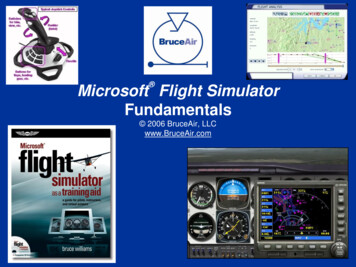
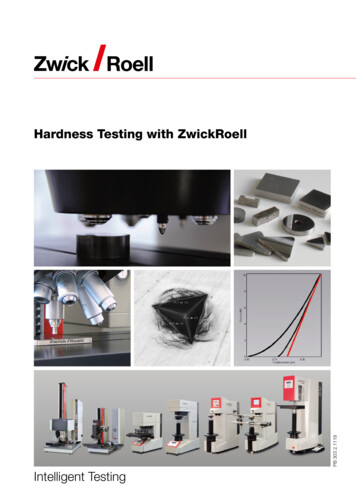
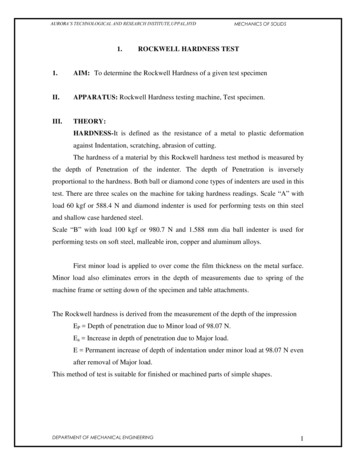
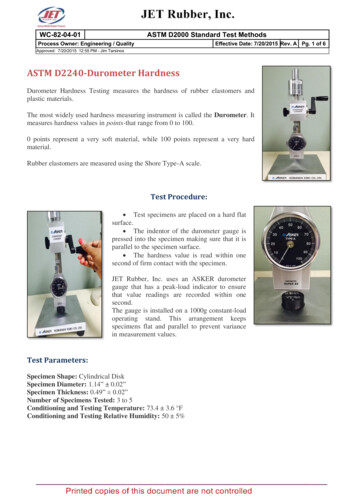
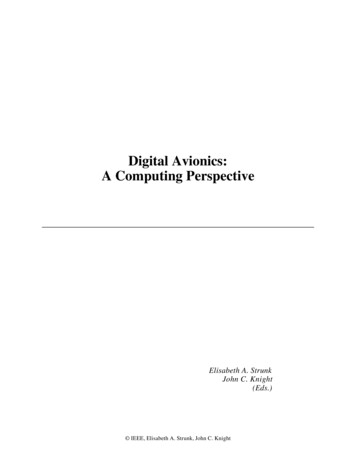
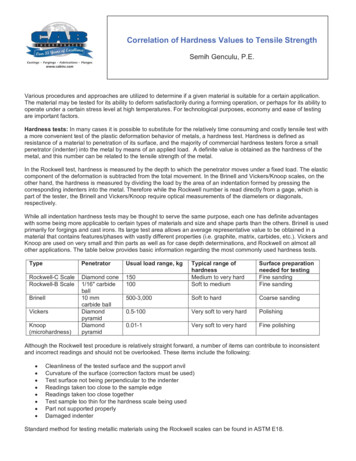

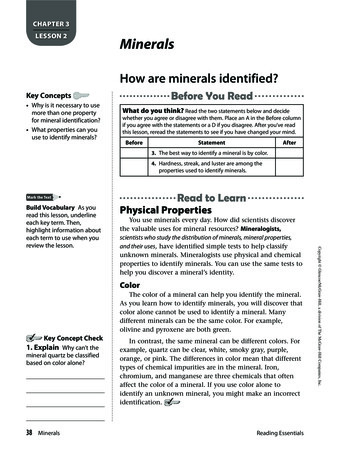
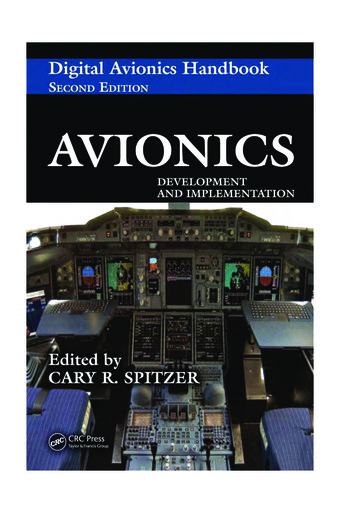
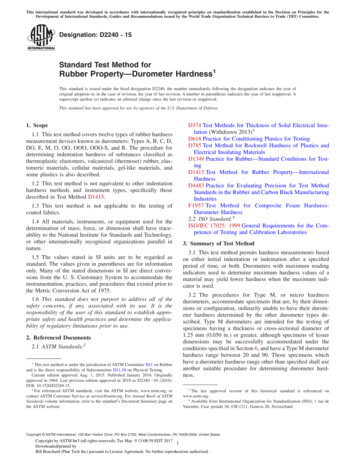
![Hardness Tests [3]](/img/2/lmcm2-aula3.jpg)